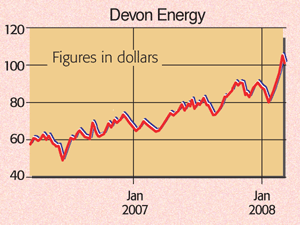
In the summer of 2003, a simple power outage in a northeast Ohio town set off a chain reaction that would lead to more than $6bn worth of damage to the US economy. As a 350,000-volt power line brushed against a roadside tree, the local power grid collapsed, sending an electrical surge that short-circuited power systems from Detroit to New York and Toronto. Traffic lights failed, subways were evacuated and thousands of people were trapped in lifts in offices and apartments. More than 50 million people ended up in darkness in the biggest blackout in America’s history.
Unfortunately, America hasn’t seen the last of these blackouts. With energy demand having risen by 35% in the US over the last decade, and forecast to rise another 40% in the next 15 years, a threadbare power grid (which hasn’t had any significant capacity added to it in 20 years) is struggling to handle the volumes. In response, American utilities have been falling over themselves to build new coal-fired power plants to meet demand.
But this isn’t really a sustainable response. First, it’s getting expensive, says Matthew Wald in The New York Times. The cost of building a coal-fired power plant has gone through the roof in recent years. But more importantly, it isn’t playing well with the environmentalists. The result? The threat of heavy taxation on carbon emissions and a consequent announcement from Citigroup, JP Morgan Chase and Morgan Stanley that new guidelines will be taking this risk into account when considering lending money out to build new coal-fired plants. Borrowers must now submit plans on “how they intend to offset carbon emissions and account for future costs from such new regulations”, says Jim Juback on MSN Money.
All this is fast turning the attention of utility companies to natural gas, which burns more cleanly than coal and makes for cheaper plants. A gas-fired plant is also about 25% cheaper to construct. A total of 7,727 megawatts of gas-fired capacity was built in 2007 and that’s expected to climb to 9,966 megawatts this year. Pace Global, the energy consultancy group, has lowered its projections for new coal-fired power plants between 2006 to 2025 by 33%, and upped projections for gas-fired plants by 100%.
This added demand is rapidly going to affect prices. Although global supplies of natural gas are plentiful, reserves in America have been run down for years, with some industry experts suggesting that production peaked in 2001. Sourcing gas from abroad will also be a problem. For use in the US, the gas would have to be liquefied at a plant near its source in a country such as Qatar, loaded onto specially designed ships and then turned back into gas at a plant in America.This isn’t easily done – note that only 3% of global gas demand ends up being filled by liquified natural gas (LNG).
So with demand already outstripping a constricted supply, natural-gas prices look set to follow oil’s trajectory. “Old salts of the energy markets steer by the lights of a six-to-one ratio between the prices of oil and natural gas,” says Chris Mayer for the Rude Awakening. With the current ratio at 13-to-one, gas has a long way to go, especially given that with solar, wind power and biofuels all a bit unsatisfactory, many recognise natural gas as the ideal stepping stone to a carbon-free future. We have a look at one gas producer who should do well out of this below.
The best stock in the energy sector
One of the company’s best placed to benefit from the boom in natural gas power should be Devon Energy (NYSE:DVN), says Jim Jubak on MSN Money. Devon is one of the largest exploration and production gas companies in the US (to say nothing of being the 48th best company in America to work for, according to Fortune). It has a dominant position in the gas-rich Barnett Shale region in Texas. Its production mix is split with 64% natural gas, 36% crude oil.
Devon had a great year in 2007, reporting record net earnings of $3.6bn for the year, a 27% lift on 2006. A “spectacular” discovery in the Gulf of Mexico last year came to fruition in the third quarter and looks set to trounce its current operations in Texas and New Mexico. Devon lifted proven oil and gas reserves by 9%, adding 437 million barrels to proven oil reserves.
Many gas producers have been suffering from escalating costs as drilling, hurricane insurance and exploration costs escalate. But while it can hardly avoid all the rises, Devon has a reputation for keeping a lid on costs, Scott Black of Delphi Management told Barrons – especially when it comes to exploration. The firm drilled 2,440 wells in 2007 with a 98% success rate. The shares currently trade at a discount to the sector on a forward p/e of 11.6.